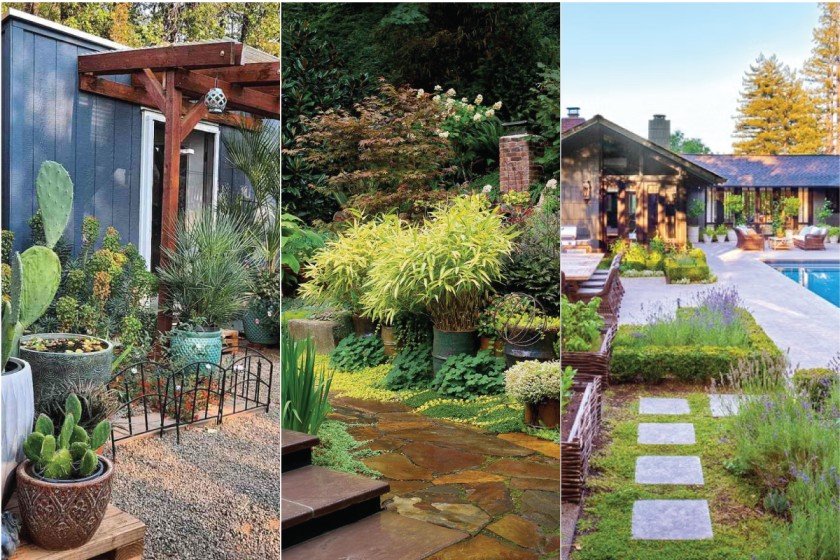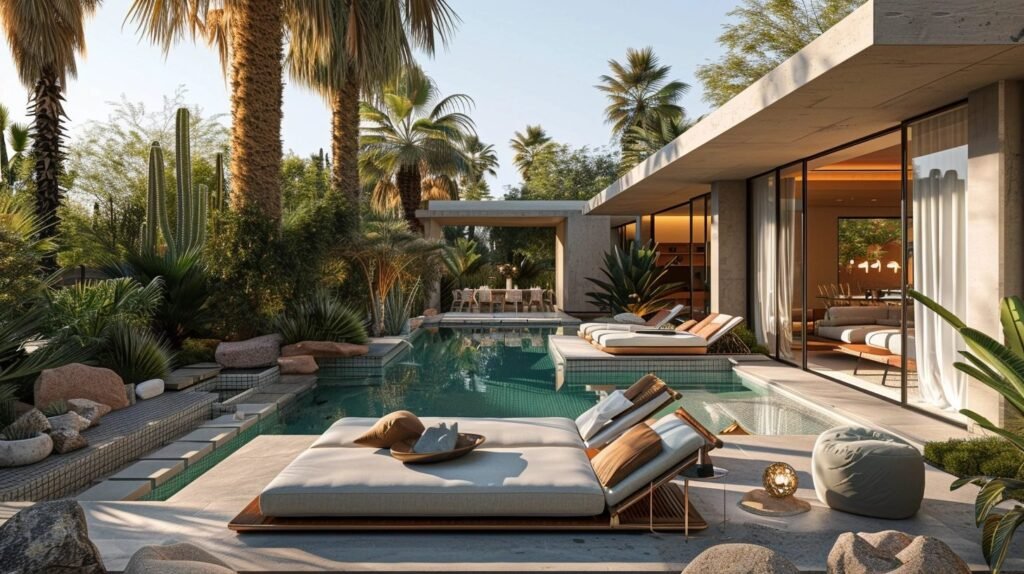
California has a wide range of climates. From sunny beaches to dry deserts and cool mountain regions, every area has its own landscape style.
Homeowners often want a yard that looks beautiful but also fits the weather and water limits. A well-planned garden does both. It saves resources and makes outdoor spaces more enjoyable.
Here are 13 detailed California landscaping ideas that balance beauty, comfort, and sustainability.
1. Drought-Tolerant Plants

Water shortages are common in California, so planting drought-tolerant plants is smart. These plants survive with little water and still look attractive year-round.
Succulents and cacti are top choices. Agave, aloe vera, and echeveria bring bold shapes. Combine them with softer plants like lavender or salvia for color contrast. California fuchsia adds bright red flowers that attract hummingbirds.
Arrange plants in layers for variety. Tall agave at the back, medium lavender in the middle, and low succulents in front. Cover the soil with gravel or bark mulch to keep moisture in.
Not only do drought-tolerant plants cut water bills, but they also reduce maintenance. No constant watering, no weekly trimming. A perfect fit for busy homeowners.
2. Native California Plants
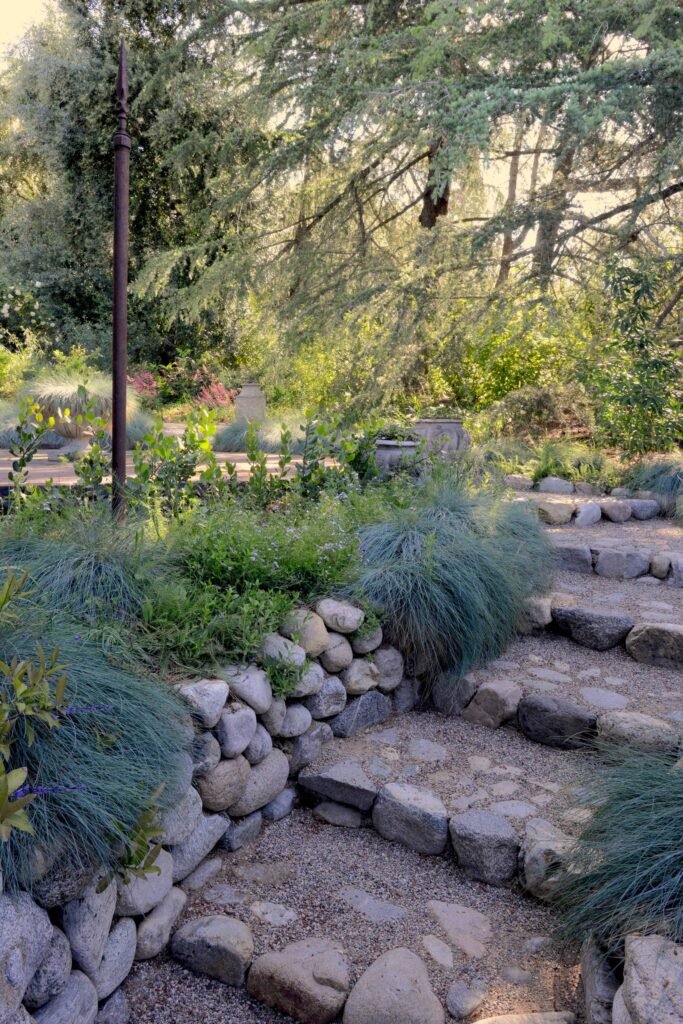
Native plants have grown in California for thousands of years. They are adapted to local soil, rainfall, and sun. That means they need less water, fewer chemicals, and almost no special care.
Popular natives include California poppies with their golden blooms, ceanothus with clusters of blue flowers, and manzanita with smooth red bark. Yarrow is another great native with feathery leaves and flat flower tops.
Native plants also support local wildlife. Birds feed on berries, bees pollinate flowers, and butterflies lay eggs on native leaves. A native garden becomes alive with movement and sound.
For design, plant in clusters rather than single rows. This mimics how they grow in the wild and creates bold splashes of color. Add small pathways between groups of plants so you can enjoy them up close.
3. Mediterranean-Style Landscaping
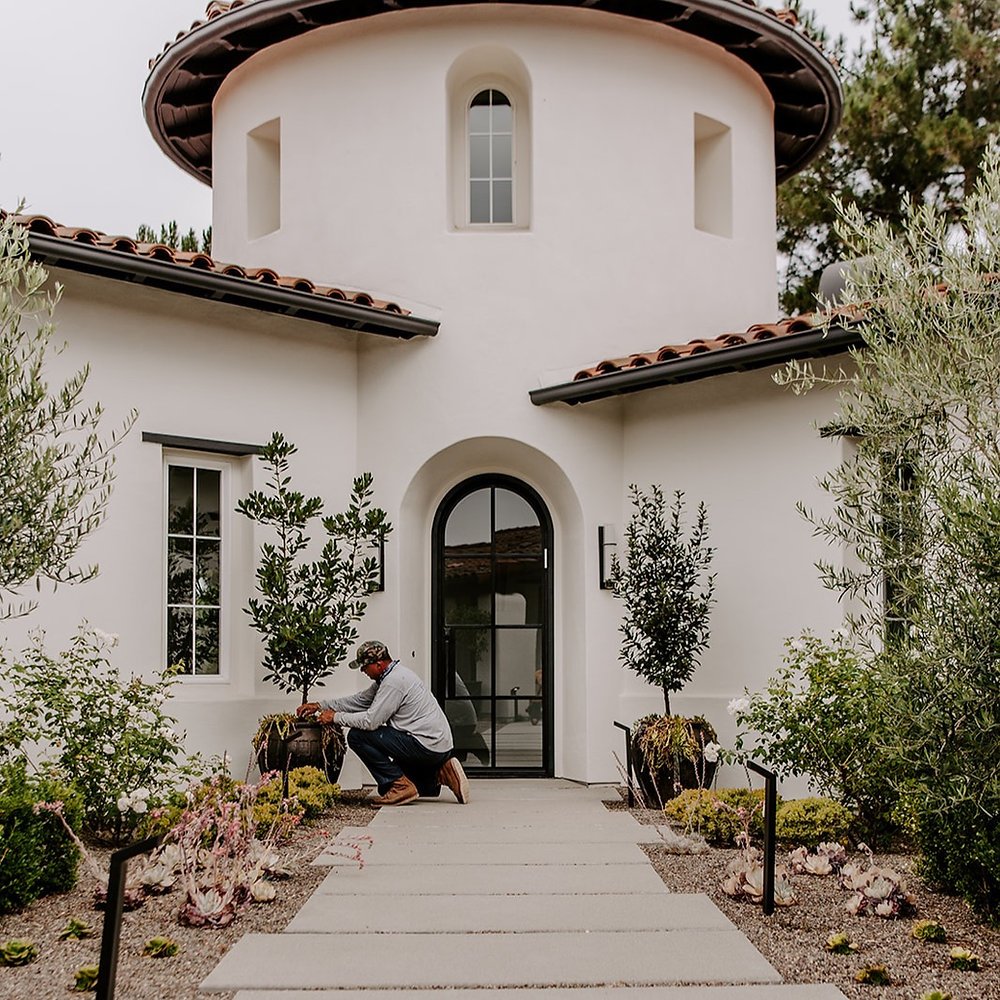
California’s climate matches the Mediterranean region, making this style very popular. Olive trees, rosemary bushes, and lavender fit perfectly here. Citrus trees like lemon and orange also add both fragrance and fruit.
For hardscape, use natural stone or terracotta tiles. A low stone wall around a garden bed gives a rustic charm. Clay pots filled with herbs can decorate patios and doorways.
Add a small fountain or birdbath for cooling effect. Mediterranean gardens often mix texture — soft herbs against rough stone, silvery olive leaves against bright flowers. The mix feels timeless and elegant.
This style is not just about beauty. The plants are hardy and need little water. That means the garden looks lush without constant care.
4. Desert-Inspired Garden
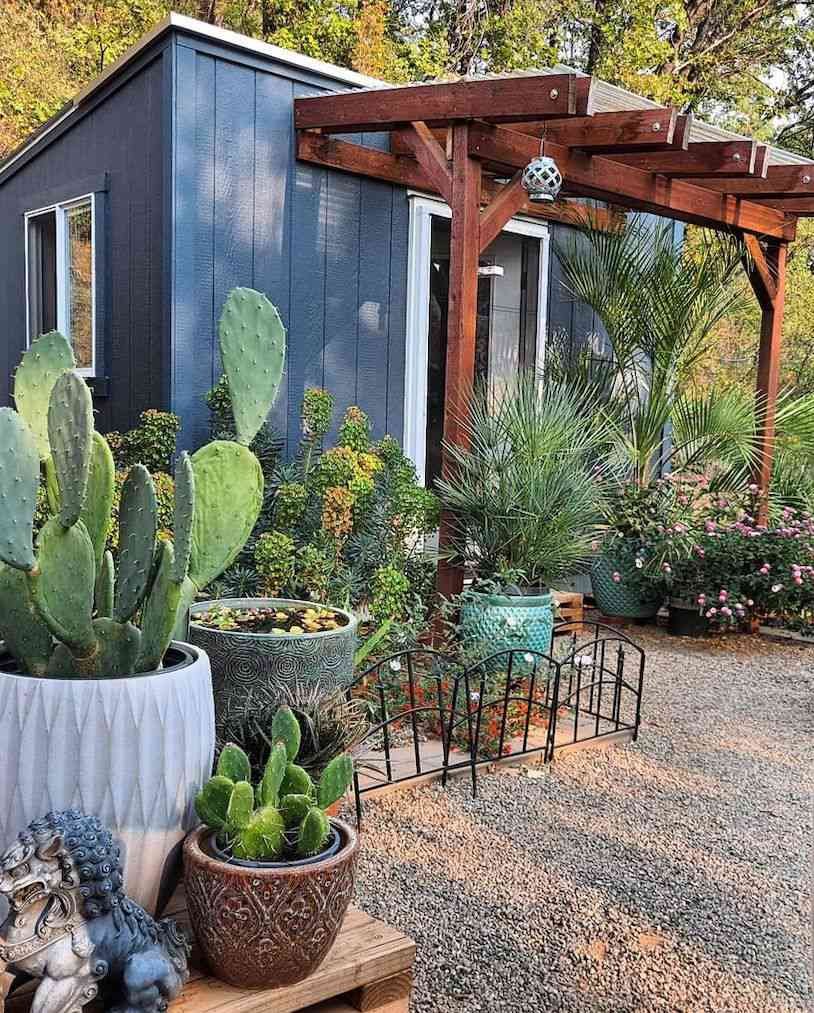
A desert garden works especially well in Southern California. It highlights natural beauty while staying water-wise.
Use tall cacti like saguaro or columnar cactus as main features. Add smaller succulents such as agave, yucca, and prickly pear around them. Accent with desert grasses like red fountain grass for movement.
Instead of grass lawns, cover soil with decomposed granite, sand, or gravel. Place boulders and large rocks to break up space and create natural groupings.
For color, include desert flowers like penstemon or desert marigold. They bloom brightly even in dry heat. Lighting can also enhance the look. At night, low spotlights aimed at tall cacti create dramatic shadows. A desert garden is bold, low-maintenance, and always striking.
5. Modern Minimalist Yard
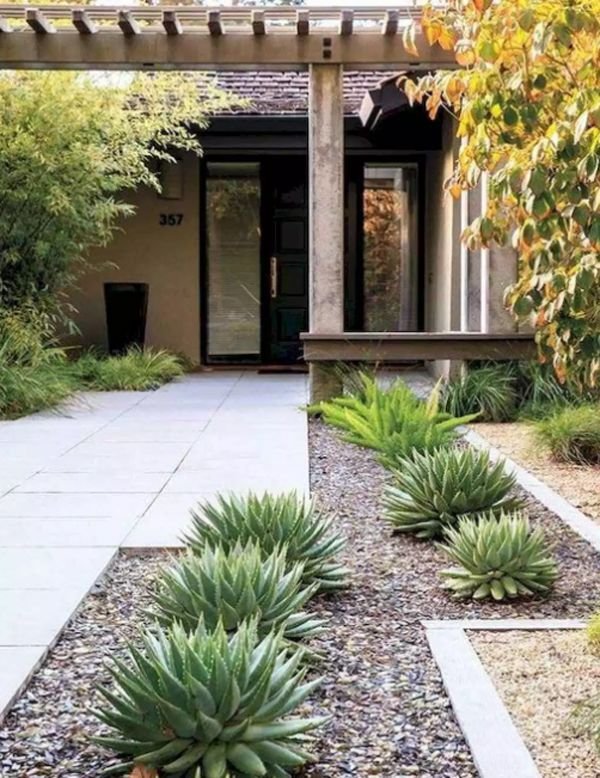
Many modern California homes pair well with minimalist landscaping. This style focuses on clean lines, simple plantings, and open spaces.
Use rectangular planters made of concrete or steel. Plant single species like snake plants, agave, or ornamental grasses in each planter for a sculptural look. Add a few trees like Japanese maple or olive for soft shade.
Pathways made of smooth stone or concrete slabs lead the eye across the yard. A water bowl or fire pit can act as a single bold centerpiece.
Limit plant variety. Too many types make it busy. Minimalist yards look best with just a few plant species repeated across the space.
This design needs little maintenance. Trimming and cleaning are easy, and the yard stays neat year-round.
6. California Coastal Garden
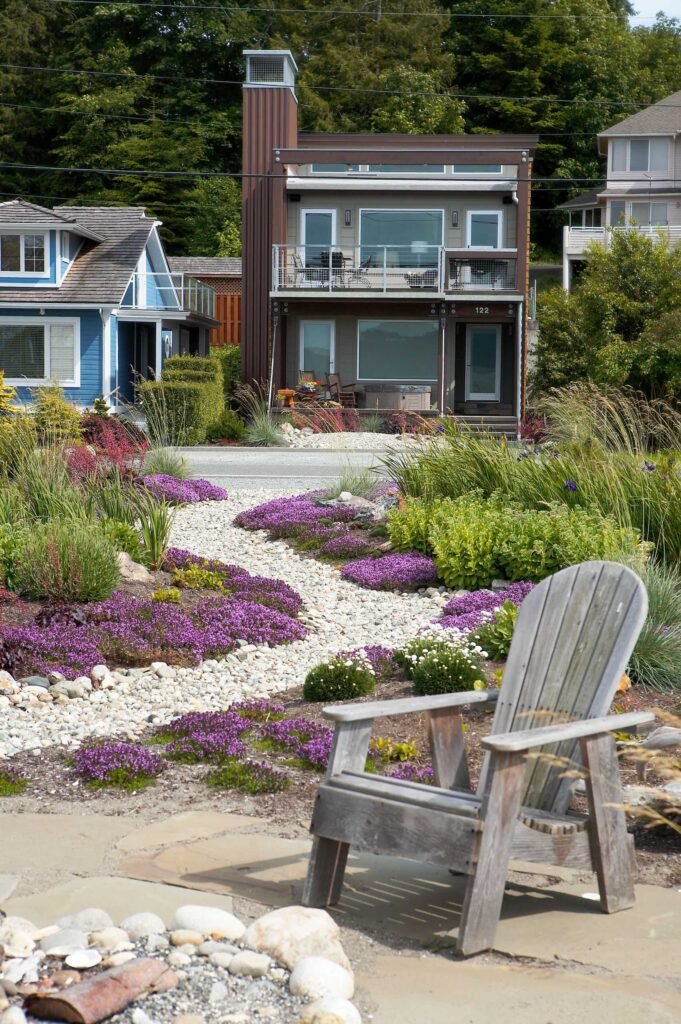
Coastal homes face salty air, sandy soil, and strong winds. Not all plants survive here, so coastal-friendly species are best.
Ice plant is a classic choice with its bright flowers and ground-cover growth. Sea lavender adds soft purple blooms, and coastal grasses sway beautifully in the breeze. Monterey cypress or toyon shrubs provide structure and handle salty air well.
Use natural materials like driftwood, pebbles, or seashells in the design. These accents highlight the beach theme. A sandy path leading to a seating area feels like a natural extension of the coast.
A coastal garden looks effortless and breezy. It connects the home to the ocean while staying practical.
7. Spanish-Style Courtyard
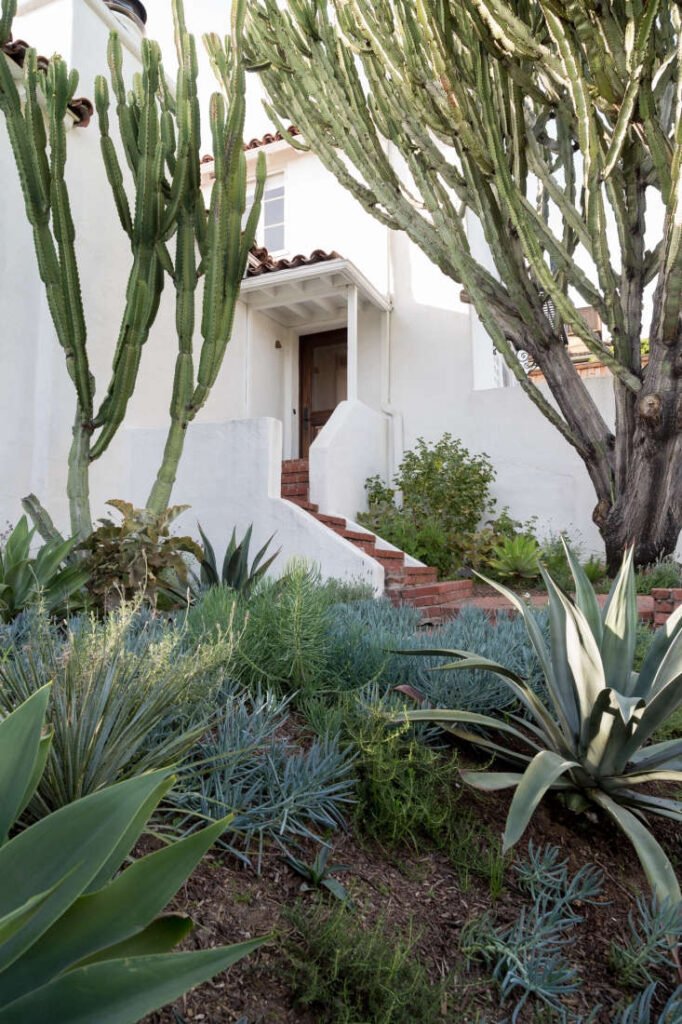
Spanish and Mission-style homes in California often include courtyards. These are small, private outdoor rooms that can be turned into relaxing gardens.
Start with a focal point such as a tiled fountain or a clay pot water feature. Surround it with terracotta pots filled with geraniums, bougainvillea, or jasmine. These flowers bring bold colors and fragrance.
Add tiled benches, wrought iron lanterns, and stone pathways for authentic style. Citrus trees like orange or lemon can be planted in large containers or small garden beds.
Courtyards are perfect for morning coffee or evening rest. The sound of water, bright blooms, and shaded corners make them inviting year-round.
8. Edible Landscaping
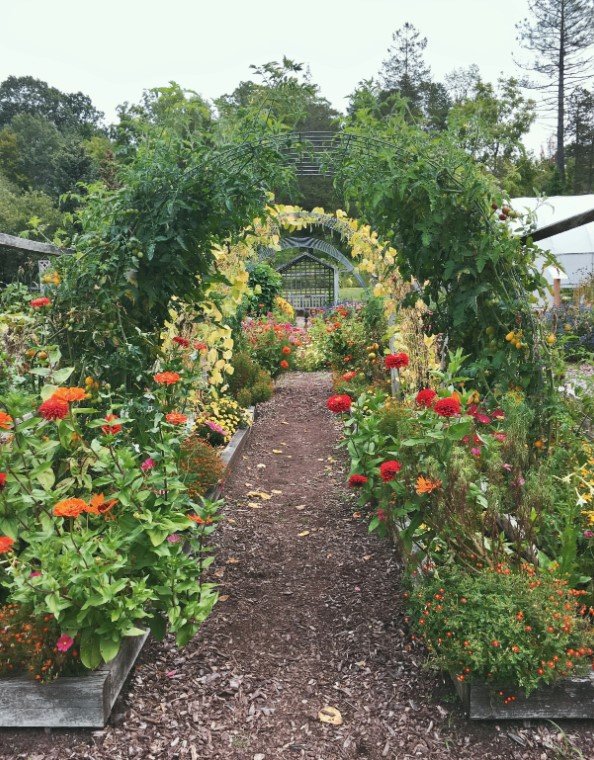
Many California homeowners love mixing beauty with function. Edible landscaping does both. It turns your yard into a source of fresh food while still looking beautiful.
Plant fruit trees like apple, peach, or fig. Citrus trees are also popular and thrive in California’s sun. Use raised beds for vegetables like tomatoes, peppers, and lettuce. Border these beds with marigolds or nasturtiums for color and pest control.
Herbs such as basil, thyme, and rosemary can grow along pathways or in pots. Grapevines trained along fences provide shade and grapes at the same time.
The key is to mix edible plants with flowers and shrubs so the yard still looks ornamental. This way, visitors see a beautiful garden, and you enjoy fresh harvests.
9. Gravel and Rock Gardens
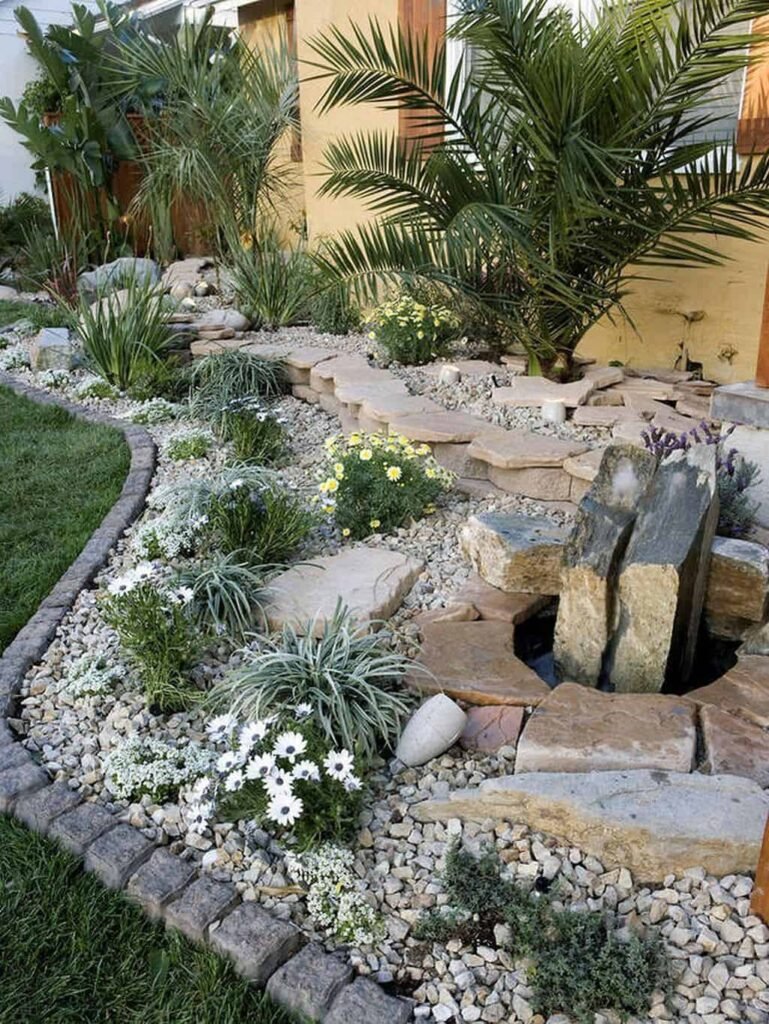
Grass lawns require lots of water and upkeep. Gravel and rock gardens are better for California’s dry climate.
Use gravel as ground cover to replace grass. Choose warm earth tones to match the landscape. Plant low-water species like sedum, yucca, and ornamental grasses through the gravel for contrast.
Rock gardens also add structure. Large boulders anchor the space, while smaller rocks create layers. Group plants around rocks to make them look natural.
These gardens are practical too. Gravel prevents weeds, improves drainage, and reduces mud during rain. Maintenance stays low, and the design lasts for years.
10. Outdoor Living Spaces
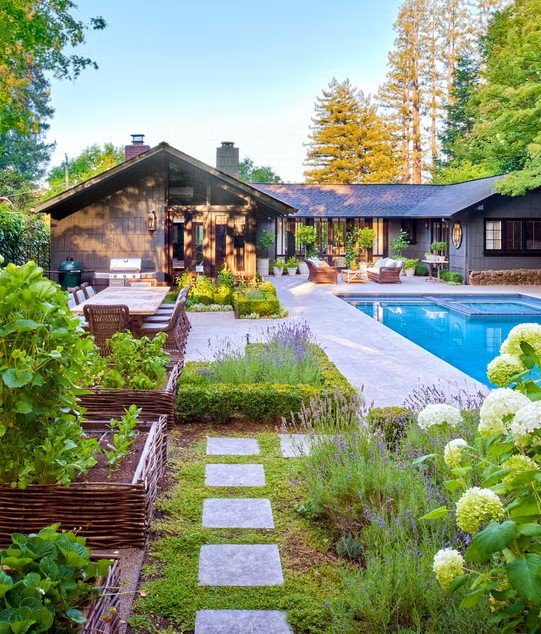
California’s weather allows people to enjoy outdoor living almost all year. A yard can be more than just plants – it can be an extension of the home.
Add a patio or deck with comfortable seating. Use pergolas or umbrellas for shade. Climbing vines like wisteria or bougainvillea can cover the structure and add beauty.
Include outdoor dining tables, built-in grills, or even a small kitchen area. A fire pit makes the space cozy for cool nights. Soft lighting, such as string lights or lanterns, creates a warm atmosphere.
Surround the area with plants for privacy and greenery. Bamboo, tall grasses, or hedges work well as natural screens.
An outdoor living space encourages family time, relaxation, and hosting guests.
11. Water Features
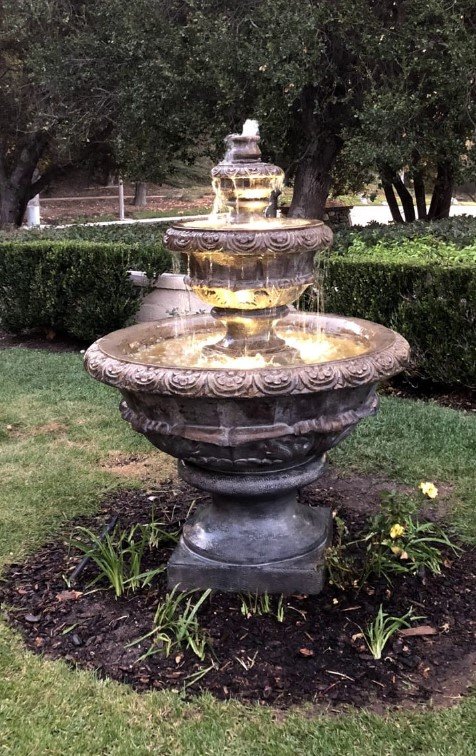
and attracts birds.
Install a small pond with koi fish and water lilies for a natural look. For smaller yards, a wall-mounted fountain works well. Even a simple stone basin with trickling water can create a relaxing effect.
Use natural stones and plants around the feature to blend it into the garden. In drought-prone areas, choose recirculating fountains that reuse water. This keeps it sustainable.
At night, add soft lighting around the water. Reflections create a magical glow. Water features become focal points that give the yard character and peace.
12. Pathways and Garden Lighting
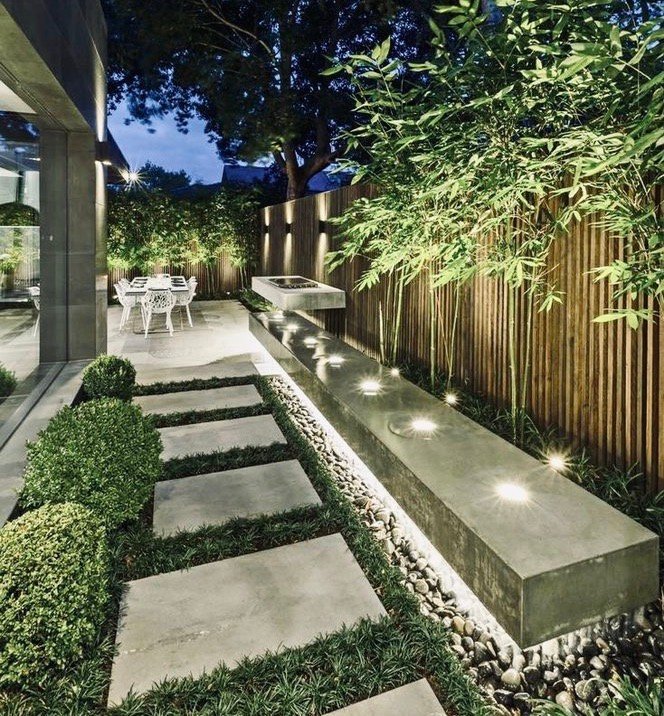
Pathways guide movement and structure in a garden. They also protect plants from being stepped on.
Use natural stone, gravel, or wood chips for pathways. Curved paths feel relaxed, while straight ones give a modern touch. Borders of low plants like thyme or alyssum make the edges more inviting.
Garden lighting adds beauty and safety. Solar-powered lights along paths are simple and eco-friendly. Spotlights can highlight trees, sculptures, or fountains. Hanging lanterns add charm to seating areas.
Lighting extends the use of your garden into the evening. It creates mood and makes the space feel welcoming.
13. Shade Gardens
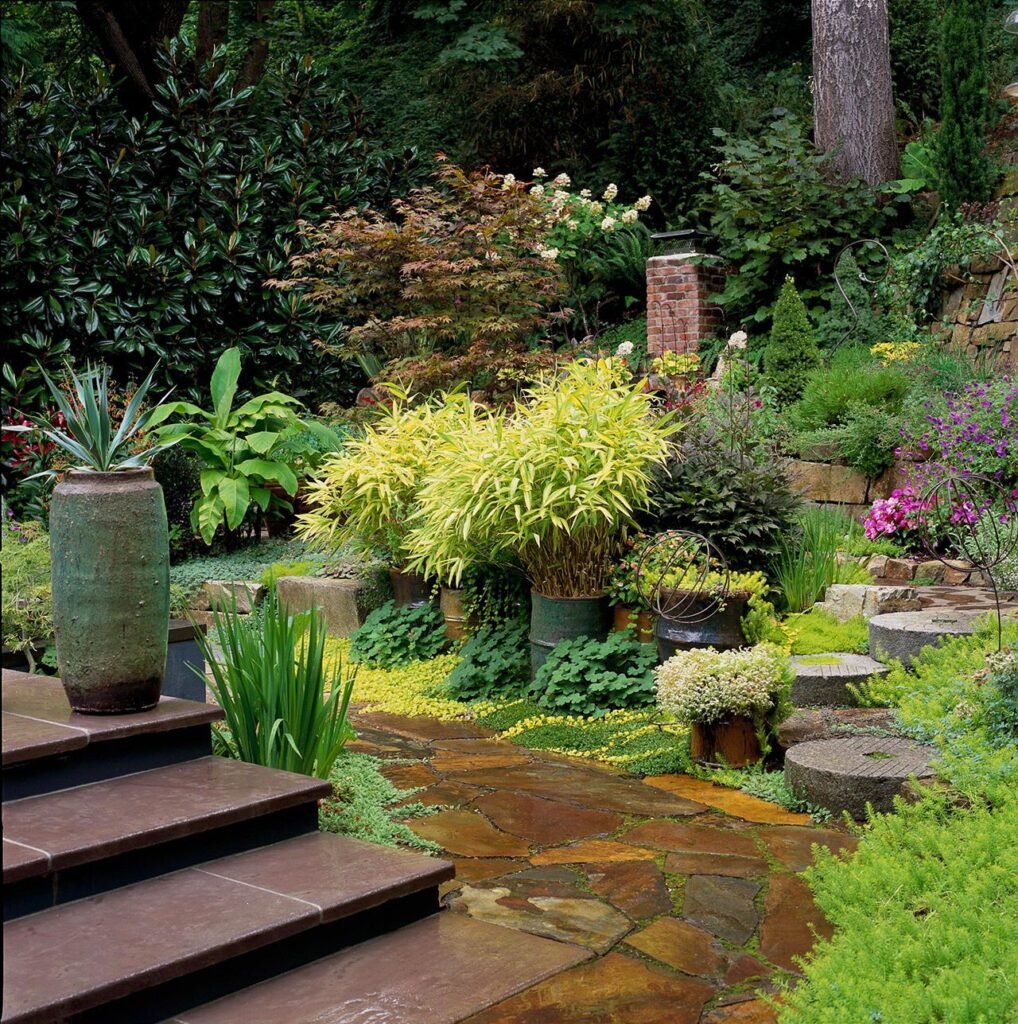
Not all parts of California get strong sun. Some yards have large trees or shaded corners. These areas can become lovely shade gardens.
Ferns, hostas, hydrangeas, and impatiens thrive in low light. Mix different leaf textures and colors for interest. For example, pair dark green ferns with light green hostas and white hydrangea blooms.
Add stone benches, swings, or hammocks under the trees. These create cool resting spots during hot summer days. Decorative items like lanterns or bird baths add character.
A shade garden feels calm and refreshing. It becomes a private retreat away from the heat.
Conclusion
California offers many landscaping styles that fit both beauty and climate needs. From drought-tolerant plants to lush shade gardens, every design has its place. Native plants and gravel gardens save water while still looking rich.
Mediterranean and Spanish-style yards bring timeless charm. Coastal and desert gardens celebrate the state’s natural beauty.
Adding outdoor living spaces, pathways, and water features makes a yard more than just a garden. It becomes a space to live, relax, and enjoy. With thoughtful design and plant choice, any California yard can become a green sanctuary that feels welcoming all year.

